9.0 HEROES && COMMANDERS
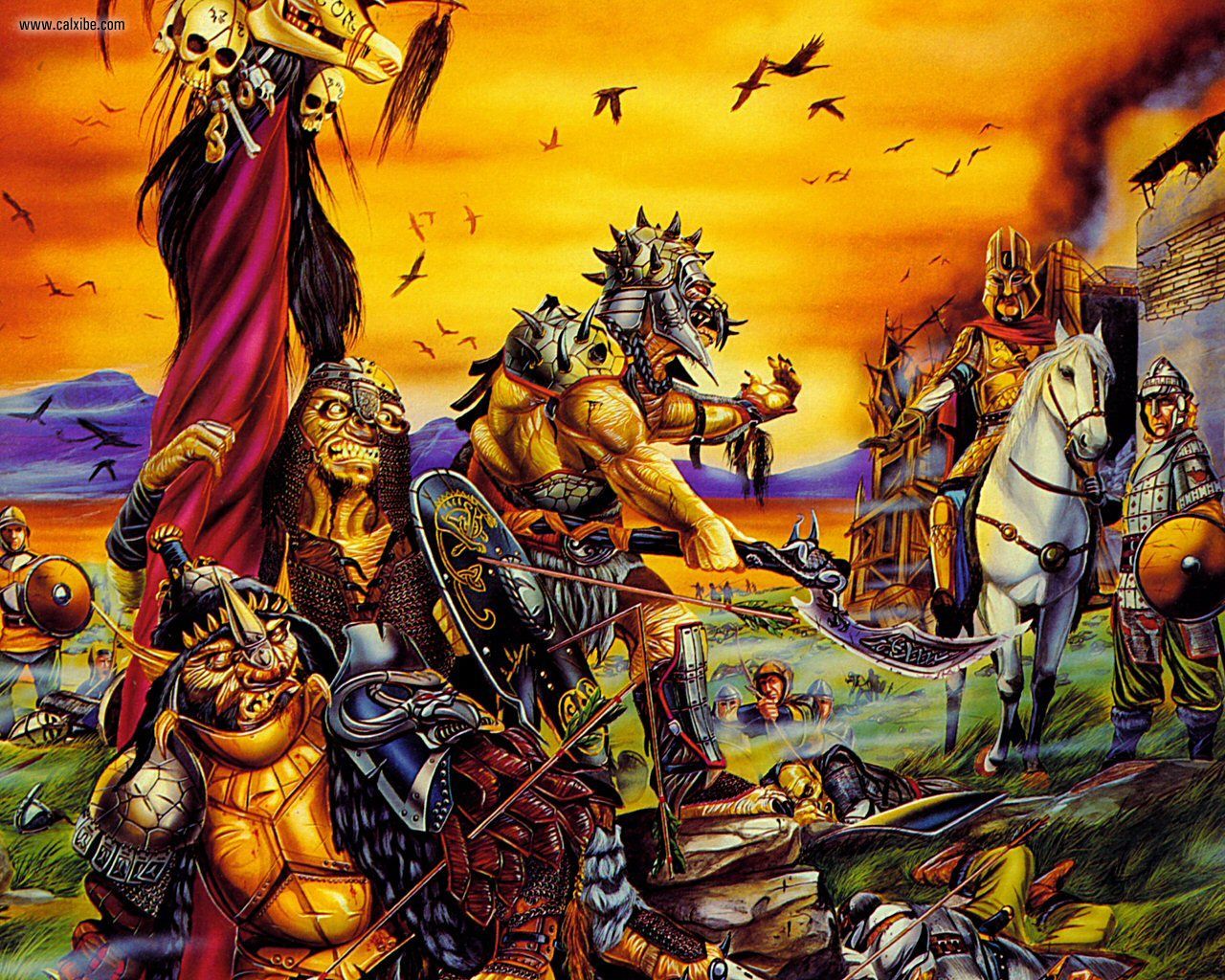
9.0 HEROES && COMMANDERS

|
|
|
|
|
|
|
|
|
|
|
|
PCs and major NPCs can
be part of units, command units, or be Heroes acting
alone on the battlefield.
PROCEDURE
During set-up, each player must
identify the initial role that each
PC/NPC individual will play in the
battle. These roles are: member of unit,
Unit/Brigade/Army Commander, or
Hero. A character can also be designated
as a Deputy Commander. A Deputy
Commander can take over for a
Commander during the battle. PC/NPC
individuals can change roles during a
battle. All changes of roles must be declared
at the beginning of the
Movement Phase of the current Game
Round, and take effect immed..
CASES
[9.1] CHARACTERS AS MEMBERS OF UNITS
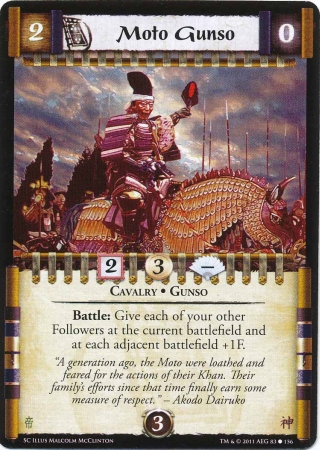
PC/NPC individuals who are declared
to be Members of Units are assumed to
be with their unit at all times. They
participate in melee with the unit and flee
if the unit routs. They share in all
benefits and penalties that happen to the
unit. Do not use a separate mini
figure for such characters, since they are
considered to be part of one of the
figures in the unit. A PC/NPC individual
with better armor, weapons, or THACO
than the other troops in the unit can
improve the avg. fighting ability of a
unit (see [3.1] ARMY ROSTER SHEET).
Remember, however, that all members of
a unit must have the same weapon in
hand in order to fight as a unit.
Because a character fighting as a
member of a unit is part of a 10:1, 5:1, or
2:1 figure (depending on HD), he does
not receive the 1:1 ratio adjustment to
THACO in determining AR (Table 9).
Instead, he receives the ratio adjustment
appropriate to the figure of which he is a
part.
A PC/NPC individual is alive as long
as at least one figure from the original
unit remains ont he board. If the unit
routs and leaves the battlefield (see [6.4]
IF THE UNIT DOES NOT RALLY), the
PC/NPC individual cannot rejoin the
battle, although he is still alive.
If the last figure of a unit is removed
because of combat losses, the fate of the
character is determined by the following
table. Roll 1d10 and apply the
appro. result immed..
Table 11: Fate of PC/NPC in Eliminated Unit
| Die Result | Character's Fate |
| 1 | Character is killed and body is lost |
| 2-3 | Character is killed and body lies on the field |
| 4-7 | Character is badly wounded (1-6 hp remaining) |
| 8-0 | Character is unwounded but unconscious for 1-10 AD&D or D&D game turns. |
A wounded or stunned character is
automatically captured by the enemy
if at the end of the battle the enemy's forces
hold the AREA where the character fell. If
the character's side is victorious, the
character can return to his unit as soon
as he recovers.
Q: How do you include
a PC in a unit?
Is he one of 10 people in
a particular
figure or is he the eleventh?
How
does the PC affect the unit?s
AR?
A: The PC or NPC hero
does not belong to
any particular figure in
a unit; he is an extra
assigned to the unit as
a whole. A hero
affects a unit's AR or other
statistics only
when he is averaged in with
the rest of the
unit when the unit's roster
is prepared (see
page 5). This must be done
before the game
starts. This is not a very
good way to use a
hero. If this is done, the
hero does not fight
on his own. The unit's improved
stats
account for the hero's presence.
Most heroes
who fight with units attack
separately
according to their own AR,
using the rules
on pages 17 and 18.
(127.67)
Q: Do heroes have
to pay movement
costs to change facing?
If not, what
prevents them from simply
turning
around when attacked from
behind,
or running around behind
a unit or
another hero to make a rear
attack?
A: Heroes change facing
for free. Heroes
can make end-runs around
units and
attack them from the rear
if they have
enough movement. When a
hero is
attacked from behind, he
remains with his
back to the enemy for one
attack at most.
If an opposing hero tries
to run around
him and attack from the
rear, it can be
assumed that he turns to
face his attacker
as long as he knows the
attacker is there.
(127.67)
[9.2] CHARACTERS AS COMMANDERS
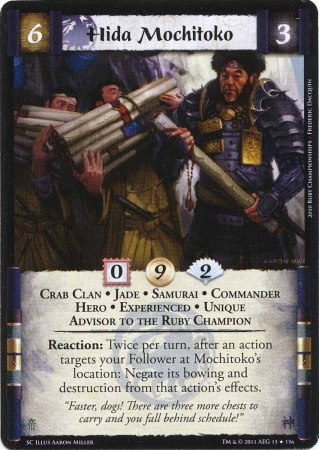
A PC/NPC individual can be designated as a Unit, Brigade, or Army
Commander. A character who
commands is subject to all rules and
procedures given in cases [4.7] to [4.10]
COMMAND.
Place a separate figure (no base) with
the unit to reprezent the Unit
Commander. Brigade and Army
Commanders are also represented by
separate figures, but are not necessarily
placed with a unit. Note the command
status of each lone figure on the Heroes
and Commanders Roster Sheet.
A commander with spell-casting
abilities cannot CAST a spell and command
his unit in any part of the Game Round
in which the spell is CAST. If a spell is CAST
by a commander, his unit is out of
command for the entire Game ROund.
However, a commander can USE magic
items or innate spell abilities and still
command.
A commander fighting with his unit is
considered to be alive as long as a single
figure of his unit remains. IF the last
figure of a unit is removed by combat,
roll on Table 11 above to determine the
fate of the unit commander.
Under certain circumstances in the
Advanced Game (an invisible asssassin,
magic, etc.) it is psb. to remove,
immobilize, charm, or kill a commander
without necessarily harming the REST of
the unit. Otherwise, a Unit Commander
fighting with the unit cannot be killed
without his unit being destroyed.
Commanders who are physically
separate from their units can be attacked
and killed as if they were Heroes ([9.4]).
[9.3] CHARACTERS AS DEPUTY COMMANDERS
Any PC/NPC individual can be
designated as a Deputy Commander at
the START of the game. Deputy
Commander status must be recorded on
the Heroes and Commanders Roster Sheet.
There are three types of Deputy Commanders:
Deputy Unit Commanders,
Deputy Brigade Commanders, and
Deputy Army Commanders.
A Unit Commander can be designated as a
Deputy Army Commander. Heroes and
members of units can be designated as
any type of Deputy Commander.
A character can only be a Deputy
Commander for one Commander. Each
Commander can have only one Deputy
appointed to him.
A Deputy Commander can take over
for his designated commander if that
commander dies, is disabled, is removed
from combat, or is otherwise not in
command of his forces. A Deputy
Commander can only take over
command of a unit that is currently out
of command (i.e., command cannot be
"passed over" by a Unit Commander
who wishes to become a Hero, for
example, unless that commander's unit
goes out of command for at least the
remainder of the current Game Round).
OPTIONAL RULE: If one or more of
the armies in the battle are using a special
command hierarchy (see [4.10]
COMMAND HIERARCHY), the owning
player(s) must prepare a Chain of
Command chart showing which
commanders MOVE into which positions
when commanders are lost. This is
particularly useful in large-scale battles.
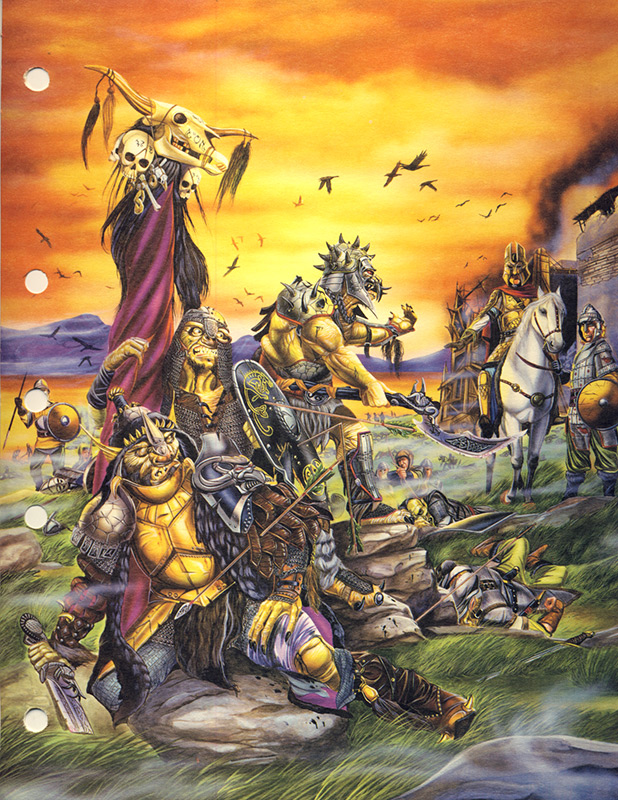
Any PC/NPC individual can
be designated as a Hero. Heroes are
represented by individual figures (no
bases) on the battlefield. Heroes roam the
battlefield, using their abilities wherever
they are most needed. Heroes may fight
other Heroes, enemy commanders,
powerful monsters, or enemy units.
Characters of any class or alignment may
be designated as Heroes. Heroes may
also be designated as Deputy
Commanders.
Heroes can engage in character vs.
figure combat and individual combat.
Heroes in individual combat USE
individual init., rather than the
init. of their side (see [5.0]
INITIATIVE PHASE). Individual combat
takes place during the Melee Phase.
A. Character vs. Figure Combat
If a Hero is capable of affecting all the
creatures represented by at least one
single figure in an enemy unit (a
M-U with an AREA effect spell, or a
high-level fighter vs. low-level
creatures, for example) resolve the
attack using normal BATTLESYSTEM
melee procedures.
If the Hero cannot affect all the
creatures in a figure simultaneously (this
is normally the case), use the following
procedure:
FIGURE ATTACKING HERO: Only 1
figure can attack a size S or size M Hero
at a time. Up to 3 figures can attack a
size L Hero at a time. The figure attacks
using normal BATTLESYSTEM melee procedures.
Each HD Of damage
caused by the figure causes 4 HP of
damage to the Hero.
HERO ATTACKING FIGURE: The
Hero attacks using normal
BATTLESYSTEM melee procedures. If
the HD result is less than 1/2 the
figure's HD, there is no effect. If the
HD result is 1/2 or more of the
figure's HD, the figure takes a
wound. (SPECIAL NOTE: Even if the
Hero's attack causes more HD of
damage than the figure has, the figure
still only takes a wound. This means that
a Hero cannot kill a figure in less than
two Game Rounds, regardless of HD
results, unless the Hero is capable of
affecting all the creatures represented by
at least one single figure. In that case, the
Hero can kill an enemy figure in only one
Game Round.)
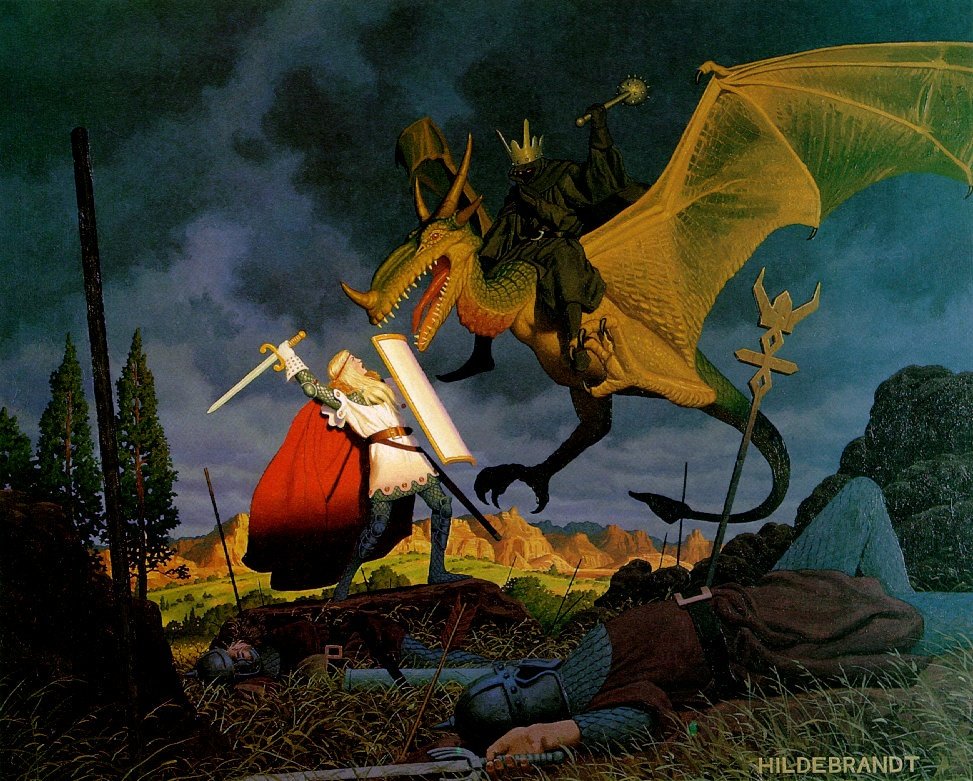
Individual Combat is melee combat
between figures with a 1:1 ratio. It is
resolved using normal AD&D or D&D
game melee and magic rules, rather than
BATTLESYSTEM melee procedures.
Individual combat can take place only
during the Melee Phase, and only
between figures with a 1:1 ratio who are
in base-to-base contact.
Individual combat takes place at a rate
of 3 AD&D or D&D game melee
rounds to 1 BATTLESYSTEM Melee Round.
Because of the speeded-up time scale of
individual combat, no attack made while
in individual combat can ever affect a
figure of 2:1, 5:1, or 10:1 ratio, even if it
is a ranged (i.e. missile) weapon or an
area of effect spell.
![]()
Reduce - Reuse - Recycle